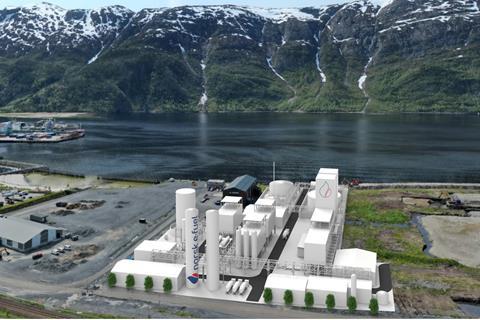In the race to develop new technologies and fuels to help cut aircraft carbon emissions, a most unlikely hero is emerging. Carbon.
Through a caterpillar-to-butterfly transition known formally as ‘Power-to-Liquid’ (PtL), carbon dioxide is sucked from the atmosphere or point of industrial emission for conversion to sustainable aviation fuel.
And it’s winning significant support, not just from airlines and energy entrepreneurs, but also from environment-focused investors committed to fund fixes which help take the heat out of climate change.
PtL uses giant fans to extract airborne CO2, which is then combined with ‘green’ hydrogen, produced by using renewable electricity to split water into hydrogen and oxygen. The end blend is “electrofuel,” or e-Fuel.

Other SAF production pathways rely on feedstocks, or ingredients, including used fats, oils, and greases, municipal, agricultural and forestry waste, and crop-based compounds.
But they are all variously impacted by impediments ranging from scarcity caused by soaring demand to unacceptability over concerns that producing some feedstocks could compete with food crops for land or water or threaten native forests and wildlife habitats.
CO2, however, is abundant, widely accessible, and a welcome riddance. Capturing and converting it to cleaner fuels is in effect decarbonising by re-carbonising.
While all SAF varieties are in high demand, some of the biggest, best-known airlines are increasingly committing to buy e-Fuels, collaborate in their development, or invest in evolving producers to secure future supplies.
Twelve, a US-based carbon recycler, just signed a 14-year e-SAF deal with IAG to supply its five airlines, British Airways, Iberia, Aer Lingus, Vueling and Level, atop existing partnerships with Alaska Airlines and the UAE’s Etihad.
Another producer, Air Company, is supported by investors including JetBlue Ventures, and partnerships with Air Canada and Virgin Atlantic.
United, the world’s third-biggest airline, is not just committing to buy SAF, but also to invest in producers including PtL entities Cemvita, Dimensional Energy and OXCCU.
And low-cost carrier Norwegian and Norsk e-Fuel are building what they claim will be the world’s first full production e-Fuels plant, while in neighbouring Sweden, SAS, Shell, LanzaTech and energy company Vattenfall plan to make e-SAF with CO2 from district heating.
Sustainability lobbyist Transport and Environment has identified 45 proposed e-Fuel projects in Europe but says none have secured sufficient funds to progress. There are multiple explanations.
In the UK, a recent study by the Royal Society found that PtL would consume “5 to 8 times the UK’s 2020 renewable electricity capacity without biofuels”.
And across the world, New Zealand’s Future Energy Centre, Ara Ake, has concluded that despite “few constraints on the supply side”- New Zealand’s power is already 80% renewable, with a target of 100% by 2030 - the cost of producing e-Fuel for domestic aviation would be twice that of liquid hydrogen and around 10 times that of converting waste biomass.
Others see no barriers. The United Arab Emirates, an affluent, oil-rich and industrially diversifying country, sees PtL as a big opportunity and an optimal pathway to produce SAF for both local use and export.
The Gulf nation plans to use its “intense sunshine and sustained winds” to generate renewable electricity, using repurposed existing refinery infrastructure.
It has flagged as “ambitious but feasible” production of up to 11 million tonnes of PtL SAF per year by 2050.
The aviation arm of global business consultancy Roland Berger says e-Fuel is “the most sustainable SAF option,” and in the medium to long term the cost of producing it will fall, “albeit highly influenced by subsidies and energy costs.”
“Without feedstock limitations,” it says, “there can be a path to achieve net zero in 2050.”




















